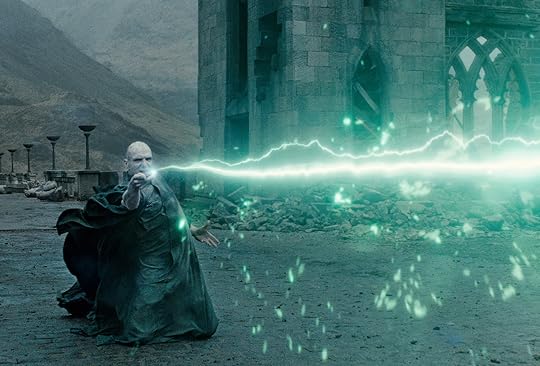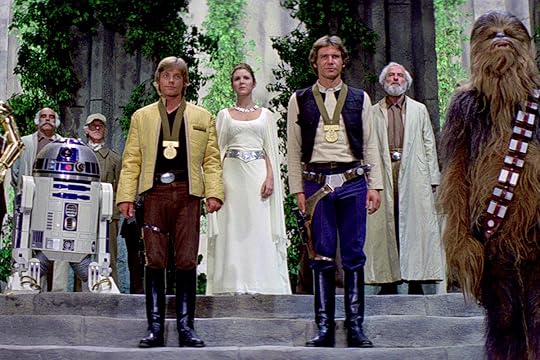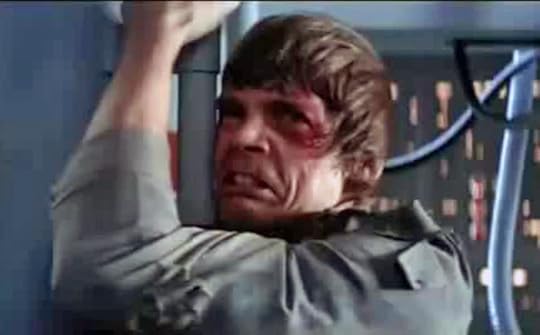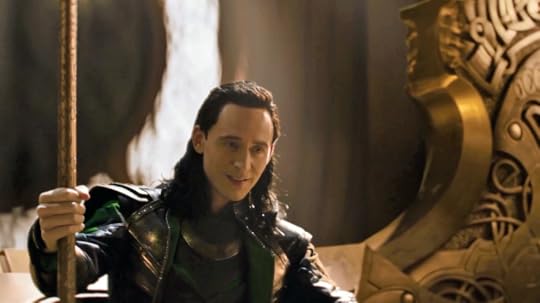How to Outline a Series of Bestselling Books
 Every good series has to start somewhere. If you’re of the mindset (as I am) that a problem as complicated as the novel is best approached from the big-picture view of an outline, then it only makes sense that the even greater complexities of serial fiction will benefit even more when their authors understand how to outline a series.
Every good series has to start somewhere. If you’re of the mindset (as I am) that a problem as complicated as the novel is best approached from the big-picture view of an outline, then it only makes sense that the even greater complexities of serial fiction will benefit even more when their authors understand how to outline a series.
These days, books run in packs. The vast majority of authors are writing sequels and series. Aside from the fact that series are fun and offer the opportunity to return to beloved characters and settings, they’re also a smart marketing decision. Hook readers with one book, and they’re likely to return for the rest of the series.
Easily the most frequent follow-up question I’ve gotten over the years to my book Outlining Your Novel is: “How to outline a series?” I’ve hedged and hawed on that, offering a few logical suggestions here and there. But up until now, it isn’t a subject I’ve felt qualified to write about since… I’d never written a series.
And I’m glad I waited. Last year, I began my first-ever series when my originally standalone portal fantasy Dreamlander turned into a trilogy on me. Outlining the follow-up books has been an entirely different, multi-faceted, and incredibly rewarding experience. Figuring out the real-time steps of how to outline a series has exploded several of my preconceptions about the process and taught me much more about both outlining and storycraft in general.
Ready to find out how to outline a series of books you’ll be proud of and readers will love? Let’s get started!
Should You Outline the Whole Series or One Book at Time?
This is probably the most common question I receive about how to outline a series. Obviously, my approach to the Dreamlander trilogy has been a little wonky, since I wrote and published the first book with no intention of following it up. I outlined the first book with no idea there would be sequels, and now that I am outlining the sequels, the first book in the trilogy is already set in stone and I only have to worry about the remaining two.
The approach I’m finding works best is basically the one I’ve been recommending all along: outline the overarching story upfront, but not all the books.
The whole point of outlining, whether you’re working on a standalone or a series, is that you discover the story’s end, so you can then appropriately set up the beginning. This is arguably even more true of a series, in which the big-picture resonance of the overall plot and theme will be even more hotly anticipated by patient readers, who sometimes wait years for the payoff in the end.
The secret of tremendously powerful and popular series is that the ending is always present in the beginning. Authors such as J.K. Rowling knew how the story would end right from the beginning.

However, this does not mean you need to write a complete outline for each book in your series right at the start. Especially if you’re like me and your outlining process is in-depth and detail-oriented, it may actually be counter-productive to hammer down all the details of your later stories until you’ve written the earlier ones.
An outline, however thorough, is never the final story. Many important details will inevitably change during the writing of the first draft. If too many of those changed details pile up, you may find the original outline you wrote for Book 3 or Book 4 suddenly doesn’t work.

Your Game Plan for How to Outline a Series #1:
As you’re working your way through your story’s plot holes, figuring out where events are going and what your character’s transformation will be in the end, you should end up with an overall picture of your series’ arc. It’s good if you have an idea of at least the shape of each of the three acts in your planned follow-up books. Keep track of the big moments you discover, which may turn into your major plot points in later books.
Beyond that, you only need to explore future books insofar as you have questions about them that affect your current book. Go ahead and finish this book’s outline and first draft. After that, you’ll have a solid foundation for the books to follow, and you can dive into their individual outlines one by one.
How Should You Plot Each Book in a Series?
Another question I frequently hear is: “How can I keep the main conflict going in my series without making the individual books feel incomplete?”
This is an excellent question, because there’s little readers detest more than stories that cliffhang them for no good reason.
Now, it’s important to differentiate between a cliffhanger that hooks readers into the next book (see the final section in this post) and a cliffhanger that simply leaves all the book’s conflict questions unanswered. Even within a series that features a focused overall plot, each episode within that series must be complete unto itself.
Otherwise, you risk reader frustration. Why did they spend six hours reading this crazy book if they don’t get to find out what happens?
Your Game Plan for How to Outline a Series #2:
Your overarching series will have a dramatic premise of its own. The protagonist’s main goal within the plot and main Lie within the theme will not be resolved until the Climax of the last book within the series.
However, each book within the series must also have its own “mini” dramatic premise. The protagonist will not reach his main plot goal until the end of the series, but she will definitely gain or lose the individual plot goals she is seeking within each story.
For example, Jack Aubrey and Stephen Maturin’s overall goal in Patrick O’Brian’s Aubrey/Maturin series is to “defeat Napoleon.” The series goes into the double digits without them accomplishing this. Each book, however, features its own dramatic premise, centered around a specific plot goal, which the characters either definitively succeed or fail in reaching. Each book feels complete unto itself, even as the overall story keeps on trucking.

Patrick O’Brian’s Aubrey/Maturin series is a standalone series, in which each book presents its own independent adventure, even as the story’s overarching goal of “defeat Napoleon” continues from book to book.
This is even more important within a series that does not feature a prominent overarching plot. In a series that is more episodic in nature (such as some romance and mystery series), each story essentially functions as a standalone, even though a few subplots may continue from book to book to tie it all together.
How Should You Structure Your Series?
Each book within the series will, of course, maintain its own proper adherence to the pacing of the main structural beats. But what about the larger story? How can you structure that over the course of multiple books? This is where I had to challenge some of my preconceptions about outlining a series.
I’ve written previously about how you can simply divide the number of books in your series into the overall structure to figure out where to place your major structural moments. (For example, in a trilogy or a quartet, each book can, essentially, function as either one of the acts or one of the quarters of the overall structure.) While this approach isn’t wrong, I’m learning it’s pretty simplistic.
The overall story structure will usually not line up quite so neatly, book by book, in a big, complicated series that features multiple turning points, perhaps multiple character arcs (see next section), and possibly an uncooperatively uneven number of books.
Your Game Plan for How to Outline a Series #3:
What I discovered was that figuring out how to outline a series is where a solid understanding of structure becomes even more useful. Because you can no longer rely so heavily on the easy timing equations of a single-book structure, you must step beyond the facts and into the theory of structure, using your own story instincts to determine how best to control the emotional flow of the overall series.
For example, in a trilogy, you’re usually going to find the following:
Book 1 functions as set-up, an origins story of sorts—in which the protagonist first encounters the main conflict and probably experiences an early victory.

Book 2 is a descent into the darkness of the conflict—in which the protagonist is often temporarily overcome, facing a dark moment of defeat.

Book 3 then signals the climactic period—in which the character rises from his defeat into his final heroic pose.

That said, you definitely still want to make sure your major structural moments are obvious within the overall flow of the story. The middle book should feature an obvious Midpoint that signals a shift into the full-on conflict of the second half (as we see, for example, in Goblet of Fire). In a trilogy, the second book will often end with the low moment of the overall story’s Third Plot Point (but remember, of course, that the third and final book will still feature its own complete structure with its own individual Third Plot Point).
The timing will depend entirely on how many books you’re featuring—which is yet another reason outlining your overall story idea in the beginning is incredibly helpful.
What Role Should Character Arcs Play in Your Series?
Here’s another question I hear: “Can your protagonist follow more than one character arc over the course of a series?” Originally, I thought, Naw. It’s an overarching story, right? So there should be an overarching character arc. That may be true, but it’s not quite as simplistic as it looks on the surface.
As I dug into character arcs for my sequel Dreambreaker, I realized one of the characters would be demonstrating a different arc in each of the three books. I wanted this character to ultimately follow a Positive Change Arc, but along the way, this character first had to follow two different types of Negative Change Arcs: a Disillusionment Arc in Book 1 and a Corruption Arc in Book 2, before finally being able to enter a Positive Arc in Book 3. Another character, however, clearly followed an overarching Positive Arc over the course of all three books—while still overcoming individual Lies/Truths in each book.
Your Game Plan for How to Outline a Series #4:
Just as your series will have an overarching dramatic premise to guide its plot, it will also have an overarching thematic premise to guide its theme and your characters’ arcs. You need to know right from Book 1 where your characters will end up in Book Z and what Truth their end will be proving.
However, just as structure is surprisingly flexible within the overarching story of a series, so are character arcs and theme. Pay attention to what feels right and allow your characters to follow logical paths of light and darkness on their way to their final Climactic encounter.
What’s important is making sure your character’s ultimate end in the final book is foreshadowed in the beginning. The last thing you want is for your character’s redemption or fall to come out of the blue. It needs to be a steady progression of everything that’s happened to him. Fortunately, in a series, you have all kinds of space in which to explore and develop this inner journey.
How Should You Plan to Connect Each Book in the Series?
In my exclusive Wordplayers group on Facebook (which you can find out how to join here), Vickie Owens asked me,
How should you connect book one and book two in a series? I’m looking for how to end the first book in the last chapter (create a hook or something) and start the first chapter in the second book.
As I touched on briefly in the second section in this post, one of the keys to a solid series is making sure each book is a solid episode within that series. Each book’s individual plot and its loose ends must be tied off within itself.
However, that is still going to leave hanging the loose ends from the main overarching plot. The protagonist will have reached his mini-goal for this episode, but his big plot goal is still out there beckoning—the main antagonist is still out there leering in the darkness. There’s plenty of unfinished business.
That’s what you use to hook readers into your next book.
Your Game Plan for How to Outline a Series #5:
Your individual book’s Climactic Moment will have answered its individual dramatic question. You can then use that book’s Resolution to tie off the loose ends remaining from this individual plot line. What you get to do then is to, in essence, raise the next book’s dramatic question.
What aspect of the main conflict will be most pressing in the next book?
What will be the individual main conflict in the next book?
These are both questions you can use to create a hook of uncertainty that will grab readers’ curiosity and pull them right into the next adventure. Consider how Thor: The Dark World ends with the antagonist Loki on the throne of Asgard. His presence there doesn’t affect the resolution of that individual story’s plot questions, but it does raise a whole slew of questions for the next story.

After resolving its main conflict with the Dark Elves, Thor: The Dark World then teases the series continuing conflict with antagonist Loki.
As I’m discovering, figuring out how to outline a series is a tremendously exciting and fun challenge that takes the principles of storytelling up to a whole new level. As useful as outlining is when writing a standalone book, it becomes vastly more so in creating a cohesive and powerful series that grabs reader from installment to installment and resonates deeply in its final resolution. Are you up to the challenge?
Wordplayers, tell me your opinion! Have you figured out how to outline a series of your own? Or do you prefer to skip the prep stage? Why or why not? Tell me in the comments!
http://www.podtrac.com/pts/redirect.mp3/kmweiland.com/podcast/how-to-outline-a-series-of-bestselling-books.mp3
Click the “Play” button to Listen to Audio Version (or subscribe to the Helping Writers Become Authors podcast in iTunes).
The post How to Outline a Series of Bestselling Books appeared first on Helping Writers Become Authors.
 newest »
newest »
 Glad it came in handy! Have fun with the series. :)
Glad it came in handy! Have fun with the series. :)





